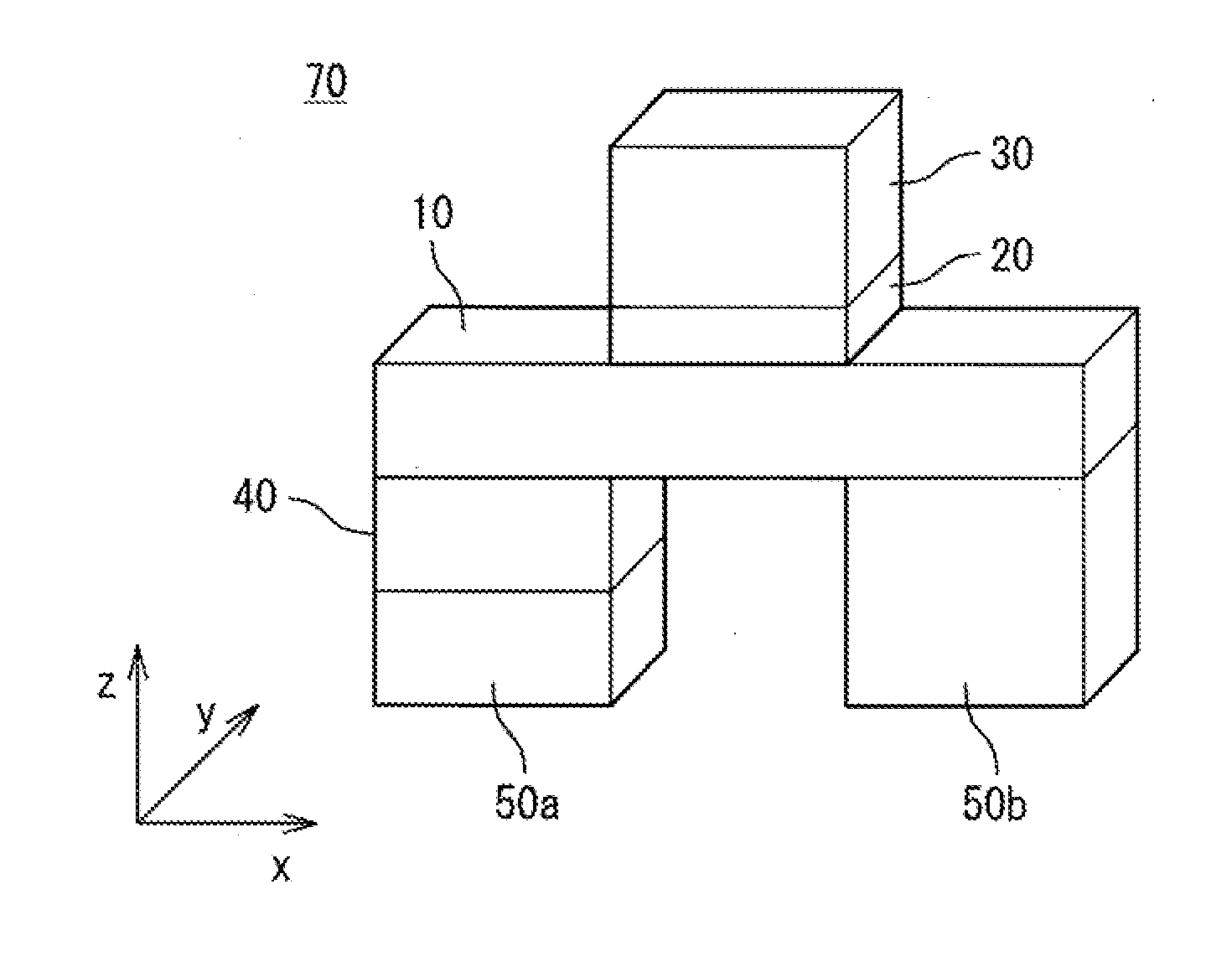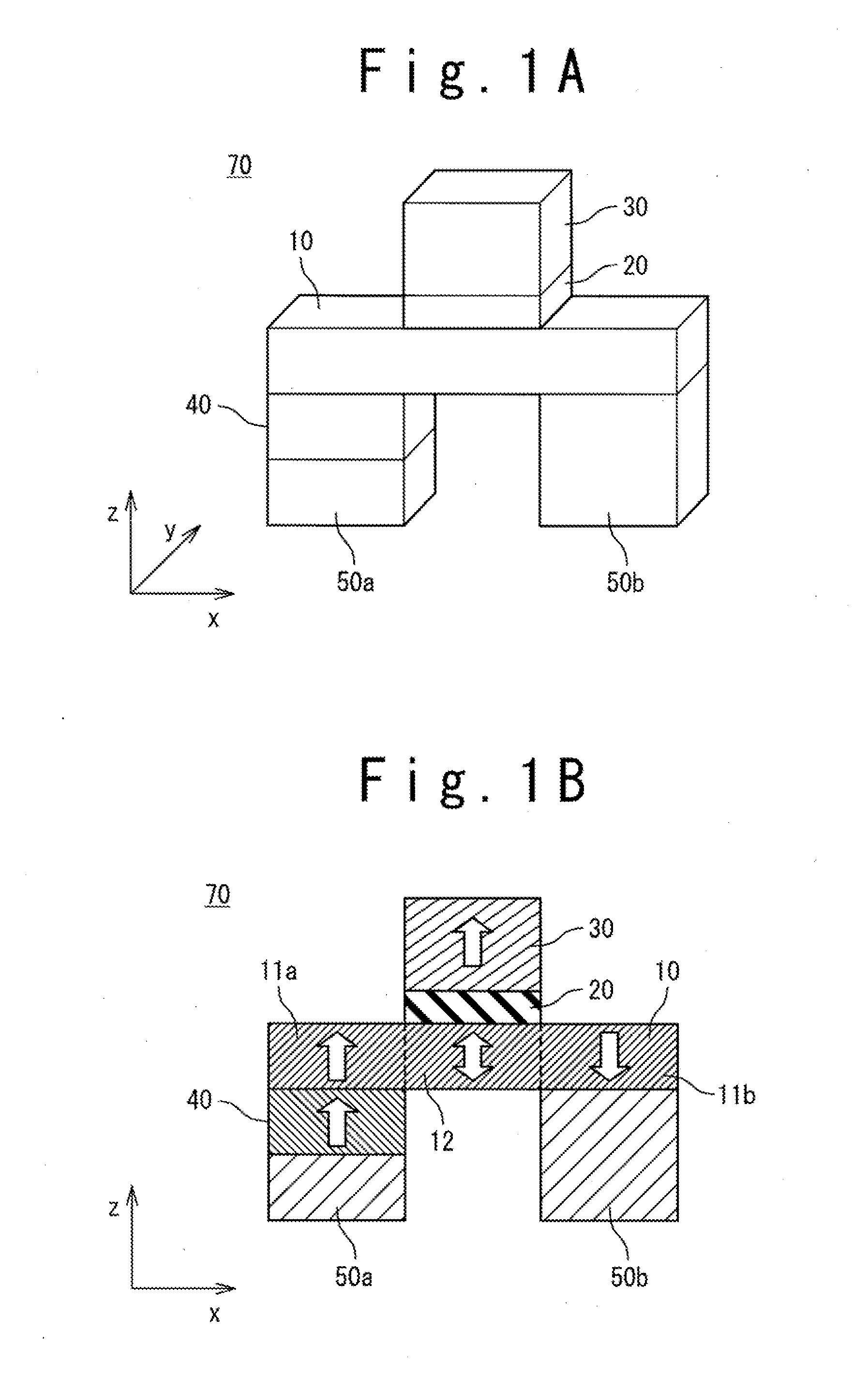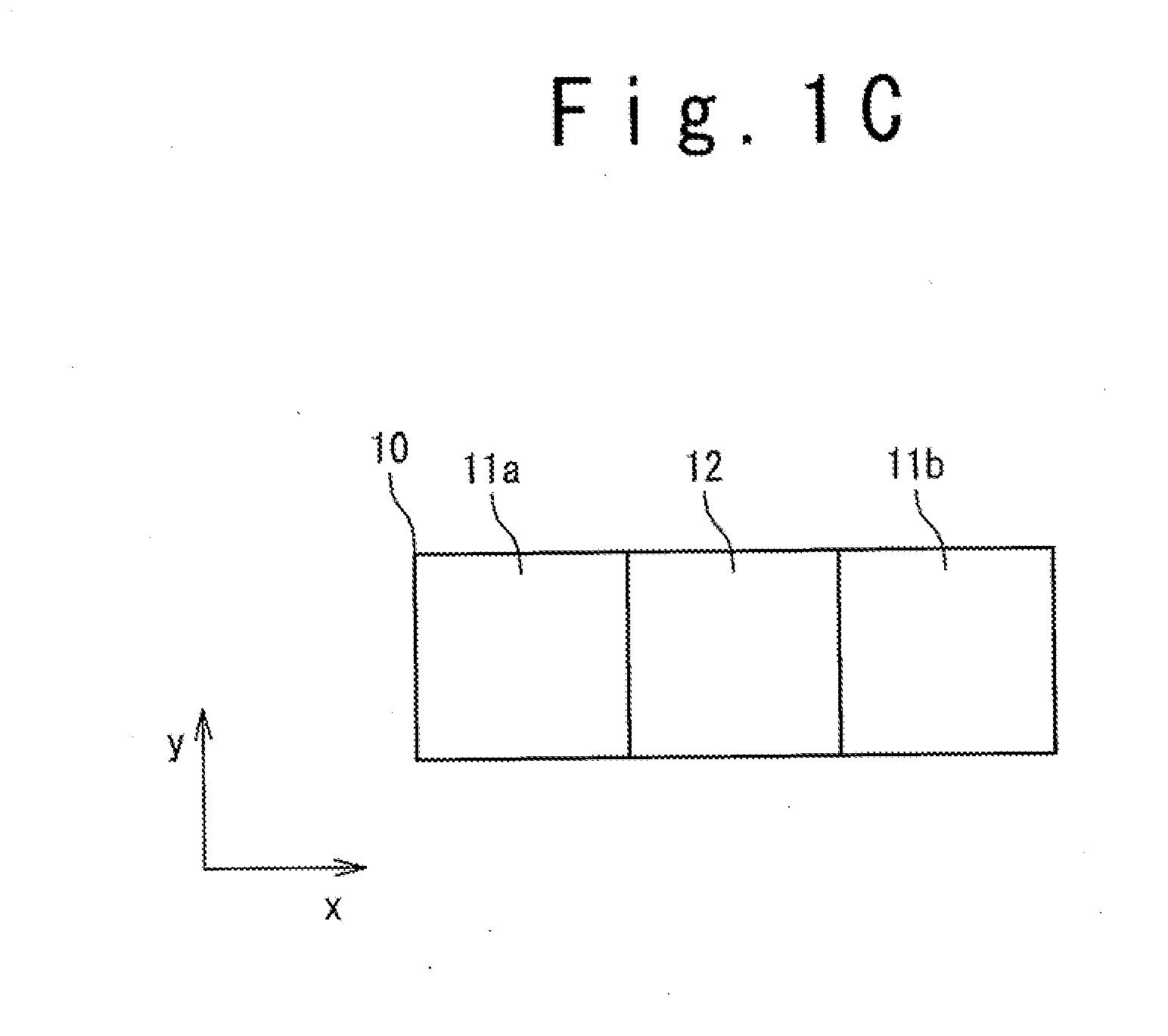Method of initializing magnetic memory element
a magnetic memory element and initialization technology, applied in the field of initializing magnetic memory elements, can solve the problems of increasing the chip area and power consumption for writing, increasing the write current, and mram being inferior to other random access memories, so as to increase the allowed range of magnetic field magnitude
- Summary
- Abstract
- Description
- Claims
- Application Information
AI Technical Summary
Benefits of technology
Problems solved by technology
Method used
Image
Examples
first modification
(First Modification)
[0112]FIGS. 13A and 13B schematically show a first modification of the magnetic memory element, specifically, junctions between the data recording layer 10 and the auxiliary ferromagnetic layer 40 (40a, 40b) in the magnetic memory element 70.
[0113]The number of the auxiliary ferromagnetic layers 40 provided for the magnetic memory element 70 is optional. That is, two auxiliary ferromagnetic layers 40 may be provided as shown in FIG. 13A or only one auxiliary ferromagnetic layer 40 may be provided as shown in FIG. 13B. Alternatively, three or more auxiliary ferromagnetic layers 40 may be provided. In the example shown in FIG. 13A, a first auxiliary ferromagnetic layer 40a and a second auxiliary ferromagnetic layer 40b are provided adjacent to the first magnetization fixed region 11a and the second magnetization fixed region 11b, respectively.
[0114]When a plurality of auxiliary ferromagnetic layers are provided as shown in FIG. 13A, the auxiliary ferromagnetic laye...
second modification
(Second Modification)
[0117]FIGS. 14A and 14B schematically show a second modification of the magnetic memory element, more specifically, the junction between the data recording layer 10 and the auxiliary ferromagnetic layer 40 in the magnetic memory element 70. The position of the auxiliary ferromagnetic layer 40 is optional. That is, the auxiliary ferromagnetic layer 40 may be joined to the lower surface of the first magnetization fixed region 11a of the data recording layer 10 as shown in FIG. 14A, or may be joined to the upper surface of the first magnetization fixed region 11a as shown in FIG. 14B. Further, the auxiliary ferromagnetic layer 40 may be joined laterally to the data recording layer 10.
third modification
(Third Modification)
[0118]FIGS. 15 to 18 show a third modification of the magnetic memory element, specifically, various structures of the domain wall introduction mechanism provided in the magnetic memory element 70. The domain wall introduction mechanism for introducing the domain wall into the data recording layer 10, which is provided in the magnetic memory element 70, may be variously structured. In detail, although an example in which the auxiliary ferromagnetic layer 40 made of ferromagnetic material is provided as the domain wall introduction mechanism has been described above, a domain wall introduction mechanism with a different structure may be adopted.
[0119]FIG. 15 shows an example of the domain wall introduction mechanism. In FIG. 15, an antiferromagnetic layer 41 made of antiferromagnetic material is provided as the domain wall introduction mechanism. Examples of antiferromagnetic materials that can be used for the antiferromagnetic layer 41 include Pt—Mn and Ir—Mn. Th...
PUM
 Login to View More
Login to View More Abstract
Description
Claims
Application Information
 Login to View More
Login to View More - R&D
- Intellectual Property
- Life Sciences
- Materials
- Tech Scout
- Unparalleled Data Quality
- Higher Quality Content
- 60% Fewer Hallucinations
Browse by: Latest US Patents, China's latest patents, Technical Efficacy Thesaurus, Application Domain, Technology Topic, Popular Technical Reports.
© 2025 PatSnap. All rights reserved.Legal|Privacy policy|Modern Slavery Act Transparency Statement|Sitemap|About US| Contact US: help@patsnap.com



